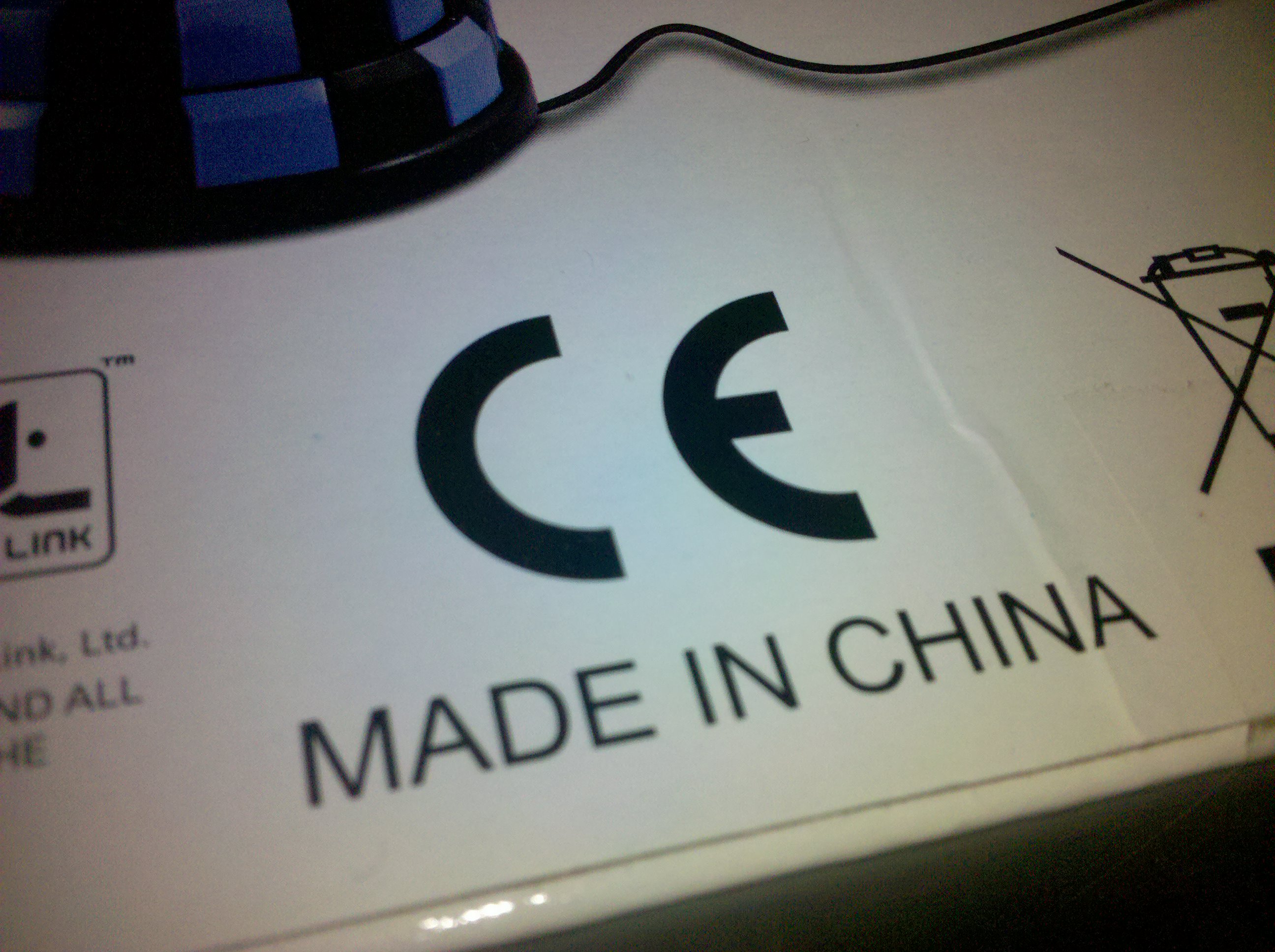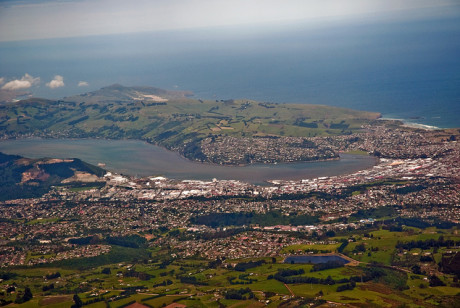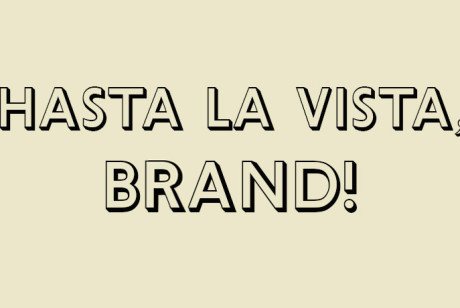Brand China, Shanghai
Friday, 4 September 1998 - Shanghai, China

Presentation Summary
An address to the American Chamber of Commerce in Shanghai. Brand China is Saatchi & Saatchi’s vision for making the “Made in China” label into a premium global brand. The latest consumer insights reveal that the Brand China values outlined in this speech match certain pervasive trends in Western consumer values.
It’s great to be back in China. It’s great to feel the positive energy and the excitement of this country again.
From where I’m based in New York and London, I’ve been hearing a lot about recession in Asia. I’ve been hearing a lot of bad news that says that the China market isn’t as attractive now as it was twelve months ago.
I say China is still the most exciting emerging market in the world, but I’m sure I am preaching to the converted here today. Saatchi & Saatchi’s commitment to China is unwavering. We’ve just opened a new office here in Shanghai and we are stacking our China operation full of the smartest young Chinese minds we can find.
Saatchi & Saatchi is an ideas company. We are committed to creating ideas that transform our clients’ businesses, brands and reputations.
We’re committed to China because China is a world changing idea.
China will resume its place as the central country. It will become the world’s biggest advertising market. It will become the world’s biggest market for just about everything!
That’s why I’m not listening to the doomsayers talk about recession, restructuring and reassessing priorities. We aren’t making the mistake of looking at adversity and calling it impossibility.
At Saatchi & Saatchi we believe “nothing is impossible”. Adversity in the market is a test of resolve. It’s a test of your commitment to a market and your marketing discipline. It’s a challenge to your imagination. I love the old proverb that says “When there are hurricanes, build windmills”. Recession is opportunity.
The successful brands in China will be those that hold their course in every situation. The brands that don’t use flat revenues as an excuse to neglect their brand equity. Your brand is the biggest asset your company has got.
In any situation there is always a positive outcome. I’ve seen some truly terrible pictures on television of the floods here in China. The scale of destruction and suffering is heartbreaking. But I also see some amazing scenes of community and cooperation. I see the People’s Liberation Army and ordinary people side by side working to save what they can and rebuild what is left.
Global brands in China should be using tighter market conditions as a positive opportunity to sharpen their focus and strengthen their relationships with their customers.
If you are an ideas driven company with vision, and you want to expand your Asia markets now is a great time for you.
One company with vision, Procter & Gamble, a global Saatchi & Saatchi client and the world’s biggest advertiser, is positive on China. They are building momentum and building brand equity now with their eyes on the long term.
Other companies are cutting costs, reducing prices, stopping product launches, introducing third tier products, cutting brand support, focussing on problems and reacting urgently with lots of meetings, lots of memos and lots of controls.
This is a fantastic opportunity for the peak performers to do exactly the opposite, launch new brands, invest in building equity, steal the best people, increase brand support, empower more, focus on the top line and get to the future first. The winners will be those who stop talking, stop meeting and start acting!
The rewards will be enormous for the brands that are not distracted from meeting consumer needs with superb products, offering great value, and wrapping it all up in fantastic advertising.
Global brand leaders here in China are proving the point. It’s the approach that works for the great global brands in every market around the world.
Three Procter & Gamble brands handled by Saatchi & Saatchi, for example, are doing exceptional business here. Head & Shoulders, Safeguard and Tide are all megabrands here as they are in the US and globally.
The exciting news for China is that there are more and more exceptional Chinese products breaking through to become great brands. Brands like Meide Airconditioners, a 100% Chinese company that makes the quietest airconditioners in China. And TCL, who sell their televisions with the proposition that they have unsurpassed audio quality.
Another exceptional Chinese branding success story which Saatchi & Saatchi helped make happen is Robust mineral water.
Robust is a true breakthrough product. It’s a model for other Chinese brands and for brands in every other global market of how to build brand equity. The success of Robust is built on quality manufacturing techniques and a simple breakthrough marketing idea.
There are hundreds of bottled water brands in the Chinese market. Differentiating one brand from the others is an extremely difficult task. When we researched the bottled water market to find what it was that motivated consumers, we came up with one insight – purity. What people want when they are buying bottled water is reassurance that what they are getting is totally pure.
It’s a very simple idea. Most great ideas are. It’s the single most important idea that the entire bottled water market is based on. But when we looked at how Robust’s competitors were marketed, we saw brands taking all kinds of positions; none were staking a claim for purity as their unique selling proposition. So that’s what we based Robust’s marketing on.
The results have been terrific. Triple digit sales increases. But most importantly, Robust now owns the idea of purity. For a bottled water, that’s a massive piece of brand equity.
That’s a great branding model for all companies in all markets. The next step for Chinese brands is to look beyond the immediate horizon. The long term goal for Chinese brands must be to become premium brands in global markets.
These days in China you only have to look inside your local shop for fantastic examples of global brand building.
Just think about Tide, Procter & Gamble’s single largest global brand. Since its introduction in 1946 Tide has been the number one laundry brand in the United States.
A great brand like Tide stands for something that consumers care about, something the brand delivers better than its competitors, something that lasts and is consistent over time. This “something” is the brand’s core value system, the fundamental reason that consumers purchase any given brand on a sustained basis.
Tide’s values are captured in a few simple phrases:
“the best clean you can get”
“a reliable, trusted friend you can always count on”
“maintaining family harmony through unsurpassed cleaning that takes care of your clothes.”
These values mean the same thing for consumers from the United States and Canada to Saudi Arabia, Morocco, Russia and China. This is what a global brand means: people all around the world sharing the same vision and set of values of the brand. In supermarkets around the world this means shoppers walking straight past other detergents, and picking up Tide.
What will be the Chinese equivalent of Tide in branding terms? Which Chinese products will make the global breakthrough in terms of innovation, quality, value and image, that will be sought after by international consumers willing to pay a premium? When will there be enough of them to make “made in China” a premium brand?
It will happen. That’s the reason I’m so excited about China. Not just because it’s a market of 1.2 billion consumers, but because it’s the hottest marketing idea of the next 100 years.
What I’m talking about is Brand China. The Saatchi & Saatchi vision for making China a premium global brand.
It has been done before. Brand Italy means style and flair. Ferrari and Armani have helped create it. Brand Japan means innovation, compact efficiency, and mass market quality. Brands like Toyota and Sony have helped create that. Brand Germany means precision. Engineering companies like Mercedes epitomise those values. Coke and Pepsi have been selling Brand USA to the world for years.
Brand China can be bigger than any of these. It has the resources of 6,000 years of history and a massive home consumer market to gather momentum from. The long term objective must be to make Brand China the number one alternative to the existing premium “made in” brands.
Brand China is all about the commercialisation of China’s return to the centre of the world order and Saatchi & Saatchi wants to play a big part in that. In Beijing in April I exhorted Chinese companies to create Brand China. To develop uniquely Chinese products and market them through Chinese values.
Today I’m extending my message to every company with operations in China. Every company with global brands should be adding a Brand China product to their brand stable.
Brand China is a long term vision. It will require coordinated and consistent delivery of messages about Chinese products by many brands in many product categories. I know that if there’s one great quality in the Chinese culture it’s a profound understanding of the long term. Foreign companies that want to position themselves to take advantage of Brand China will need the same patience and vision. Let’s not kid ourselves, there are some powerful preconceptions in the global marketplace about Chinese products right now.
But China will not be the first country to face and overcome the liabilities of a ‘Made In’ tag. In 1945 a company was formed by Masaru Ibuka called Tokyo Tsushin Kogyo. The overriding objective of Ibuka and his colleague Akio Morita was nothing less than changing the image around the world of Japanese products as being poor quality. In the 1950s “Made in Japan” meant “cheap and junky.” Ibuka had no specific product idea, except for a vague concept of applying technology to the creation of consumer products.
Sony, as the company re-branded itself to be understood in foreign markets, pursued seemingly impossible goals. Their first triumph that become a pervasive product worldwide, was a radio that fitted into a shirt pocket. We all know this as the transistor radio.
What is profound about the Sony story is that they started first with the answer – and then worked backwards to find the product to get them there. I’d like to tell you another story about smashing consumer prejudices, this one more recent.
One of Saatchi & Saatchi’s most valued global clients is Toyota. They have revolutionised the luxury car market which was traditionally dominated by Mercedes Benz and BMW. Even a decade ago there was no heritage for such a Japanese luxury car. The perception among Americans was that Japanese cars were functional, but not high performance or high quality. Toyota’s motivation with Lexus was to create a car that was superior in every performance element to Mercedes – and would cost less. This car brand would also communicate important messages about Toyota quality that would improve the desirability of their other vehicles such as Camry and Landcruiser. This was really important – promote the top of the range, the very best quality.
Lexus has been marketed around the world from day one by Saatchi & Saatchi. We set up an entire new agency of 250 people dedicated to Lexus. We called it Team One and placed it in California where our people could think freely, unencumbered by traditional Detroit practices of how you market a motor vehicle.
In America the emphasis in marketing cars had been on the engineering, the nuts and bolts. We took the approach of selling the whole package emotionally, rather than the bits in a mechanical way. We put a luxurious look and a sophisticated tone of voice on the product, and wrapped it in the line “the relentless pursuit of perfection”. That image stuck with US consumers. Now all Japanese cars are regarded as more stylish, of higher quality and better engineered.
Every time I recall the Lexus story I am amazed again. To me it is one of the most audacious marketing stories I’ve ever heard. To establish a premium brand alongside a brand as powerful as Mercedes was an act of brilliance and inspiration from Toyota.
In the crowded brandscape of the global market, establishing Brand China is going to take just as much inspiration. Our one great advantage is that the brand is not yet established in the hearts and minds of global consumers. That gives us the space to imagine.
Here is my take on the brand values. This is what Brand China means to me, and what I imagine it could mean to global consumers:
- Wisdom
- Mystery
- Spirituality
- Harmony
- Invention
- Energy
- Vitality
- High intelligence
- High craft
- Industriousness
This brand is very cool! I want to be part of it. The brand values suggest a richness, a depth, an allure that is philosophically inviting. This brand contains a rich set of beliefs and practices, from how I should care for my mind and my body and my soul, to how I should design and arrange my house.
As a consumer I have high expectations of this brand. I can’t get these values from the West, especially as they are backed by 6,000 years of culture. This is the society that centuries ago invented paper and the printing press, gunpowder, the mechanical clock, acupuncture, the magnetic compass and so on. But the brand also offers the promise of the New China, the excitement of a country re-inventing itself, and the allure of a country which is returning to its central place in the world order.
There is no brand with these values established in the Western marketplace at present. But the latest consumer insights tell us that these Brand China values match certain pervasive trends in Western consumer values. The market is waiting for Brand China.
Insights reveal that people want to imbue their personal lives with tranquility, they want to reflect this concern in their home environments. They want to add balance to their personal and professional lives. They are interested in alternative healing and holistic health. They want to develop personal philosophies of spirituality which borrow elements from many different traditions.
The pragmatic Chinese mix of spirituality and esoteric philosophy with material life is perfect for the emerging global consumers. Chinese ideas such as Tai Chi, Chinese healing, and the Tao are increasingly popular in the West. Feng Shui is another brillant Chinese idea which has hit the architectural mainstream in the West.
There are numerous products with a unique Chinese angle which could be included under the Brand China banner such as textiles, ceramics, herbal remedies, medicines, teas and beverages, and even furniture, electronics, appliances, bikes and motorcycles.
Current consumer trends all point to the next generation of adult consumers, Generation Y, the Net Gen, as being the most receptive Western audience yet for Brand China. Generation Y are the global consumers of tomorrow.
To capture this market it’s important to embark on long term development of the products and brand values now. Don’t be fooled into waiting. They want Brand China, start getting ready to give it to them now.
It will take time to achieve the level of quality which a premium global brand needs. With a ready market of 1.2 billion consumers there is plenty of potential to develop quality products and build a premium brand image in the domestic market before you launch it to the world.
Brand China products should emphasise the Chinese values which translate most readily to global consumers. For example, the typically Japanese values of compactness and quality in detail which were at the core of the Sony transistor radio became core values of Brand Japan.
Here’s a great Brand China story. 100% Chinese owned brand RHK is a tonic from the Chinese heartland which increases iron levels in the blood. Saatchi & Saatchi helped take sales of RHK in China from US$4 million to US$240 million in four years. Now we are about to launch it in Taiwan, the first step to a global market.
To me RHK sounds like another Sony story. Find the answer first. The RHK answer comes from a core Chinese value, vitality, which the rest of the world is increasingly fascinated by. The substantiation comes with a breakthrough product and marketing message. The key to success for RHK like Sony, came right at the beginning, with the answer.
To make Brand China a reality, make sure the answer you come up with is excellence. Then like Lexus, go in relentless pursuit of that excellence. Never make a product or a deal which doesn’t take you closer to that goal.
Brand China represents huge opportunities for both Chinese and foreign companies, in the China market and globally. It is the perfect partnership between Chinese companies and companies with global brands.
Companies with global brands understand the global marketplace. They understand what a Chinese brand will need to make the transition to a global brand. They have the marketing expertise and resources. Foreign companies with global brands in China should be looking for Chinese partners to develop Brand China products for the world.
Brand China will need to overcome significant marketing challenges before it becomes established.
First, we live in what we at Saatchi & Saatchi call the Attention Economy. Everyone is so busy with their jobs and families and trying to keep up with all the news and events and just making it through the week, that getting their attention is a very difficult task for an advertiser.
The number of media options for consumers everywhere are exploding. In China alone there are over seven hundred TV stations and over 1100 radio stations. And they are all screaming – GIVE ME ATTENTION! The result is that attention is a scarce commodity, and consumers will only grant you their attention if you appeal to them the right way.
Second, markets are intensely competitive. Almost every economic sector contains many competitors with products just as good as each other, service of a similarly high standard, and prices almost the same. The brand promise therefore, and the images that go with it, become the only difference between one company and another.
And third, there is the phenomenon of the “never-satisfied” customer. The expectations of consumers keep getting higher and higher. People want instant service and if they can’t get it from you, they’ll get it from someone else for the same price or cheaper. These are the sort of big picture issues that have to be grappled with in order to succeed in global markets.
At Saatchi & Saatchi we believe that the solution is totally concerned with ideas. This is the Robust bottled water story. The answer lies in simple ideas that hit the right buttons, that cut through in and connect with the hearts, guts and minds of global consumers.
Today, ideas have become the most important economic input. We have moved from the muscle to the mind as the principal tool for generating wealth. Ideas have become the primary ingredient of what we make, do, buy and sell.
And that’s why I’m so excited about China, and the potential of Brand China. First because it sounds like good business sense to me. Second, because it’s inevitable. If any culture is going to prosper in the age of ideas, then I say it will be China. The depth of Chinese philosophy, the value placed here on learning and the rich history of Chinese invention make it inevitable.
And the third reason I’m so excited, is that the long march to Brand China is going to be one wild and exciting journey. I want to be a part of it. If you’re game enough, you’ll come too.




